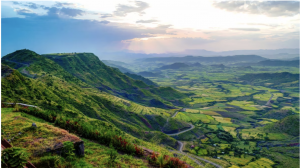Norway became the first country with a commercial plant for producing heavy water when Norsk Hydro went into operation in 1934. In 1940, Norway was invaded by Nazi Germany, and control of the plant fell into German hands. It now controlled most of the world’s heavy water production, which was an essential process in the race for developing nuclear weapons. With the start of World War II, German control of this process was very concerning to the British, and later to the American Allies, since this meant that Germany might win the race to weaponizing nuclear power before the Allies. They decided to remove the heavy water supply and destroy the plant by aiming raids targeting the power station supplying power to the commercial plant.1 However, prior to the German invasion of Norway, French military intelligence decided it would be necessary to remove a fraction of the heavy water and transport it to France during the war.2
Germany started to procure heavy water in late January 1940. In response, British Special Operations Executive (SOE) started planning several operations aimed at limiting or completely stopping German production of heavy water. The first operation, code-named Operation Grouse, launched on October 18, 1942.3 During this operation, four Norwegians parachuted onto a plateau above and near the Hydro plant. Their mission required them to gather as much information as they could regarding the plant and the heavy water operations. All the information that the team gathered was sent to SOE to plan for the next phase, code-named Operation Freshman. In this operation, a group of combat engineers were sent by gliders to join the Grouse team. Together, both teams were to set and detonate demolitions in key parts of the Hydro plant, and escape to Sweden.4
On November 19, 1942, Team Freshman left England to carry out their mission. However, the night of the operation, the weather conditions in the designated drop zones were extremely harsh, causing the first glider to crash into a mountain killing the entire crew. The second glider also crash landed, killing most of the people in the glider.5 Even after the gliders crashed, some of the crew members survived, but eventually they were captured by German soldiers, tortured, and eventually killed.
Due to the failed mission, Germans became aware of the Allied interest in the heavy water plant. This caused the Germans to increase the defenses in the perimeter, including establishing a mine field, floodlights, and deploying more guards on the site. However, this did not impede SOE. Planners continued to search for ways to send in commandos to link up with Team Grouse, which by now was renamed Team Swallow. All four members of Team Swallow lay low for several months in the mountains on top of the Hydro plant keeping contact with SOE by radio.6

After a while, SOE was able to finalize the plans for the next phase, Operation Gunnerside. In this operation, six more commandos parachuted in Norway on February 16-17, 1943. After several days, Team Swallow joined Team Gunnerside, and they started planning their assault, deciding to attack on February 27, 1943.
Several months had gone by since Operation Freshman, and the German defenses were still up, but security had become somewhat slacker. Only the bridge across the Maan River was still fully guarded, limiting their ways to get through the guards. The commandos realized that the only option they had to get inside was to climb down the 656 ft. ravine, cross the freezing river, and climb back up the other side of the ravine.7 Using information obtained, the teams then followed a rail line into the plant area without being detected by guards.
Once inside, they met with a Norwegian caretaker who assisted them in getting where they needed to be.8 The teams moved quickly into where the heavy water chambers were and placed the explosives, attaching a long time-delay fuse to the explosives. The saboteurs also made sure to leave a British sub-machine gun hoping to lead the Germans into thinking the sabotage was the British’s doing. They then lit the fuse the same way they came into the plant, and once they were clear of the plant, the explosives detonated destroying the heavy water chambers as well as 120 gallons of heavy water stored in the Hydro plant.

After the explosion, the Germans launched an all-out search for the commandos, but were unable to find them. All the commandos were able to escape the site, some into Sweden, others to Oslo, Norway, and some staying in the general area. After the successful execution, Germany started rebuilding the destroyed parts of the Hydro plant and produced more heavy water in the following months. SOE considered launching another operation but saw it as too difficult. So in November 1943 the US Army Air Forces were given orders to conduct bombing raids on the plant. Finally, after the bombing raids, the plant received extensive damage causing the Germans to halt production.
- Funk & Wagnalls New World Encyclopedia, 2016, s.v. “World War II.” ↵
- Funk & Wagnalls New World Encyclopedia, 2016, s.v. “World War II.” ↵
- Neal Bascomb, The Winter Fortress (Boston: Houghton Mifflin Harcourt, 2016), 30-35. ↵
- Neal Bascomb, The Winter Fortress (Boston: Houghton Mifflin Harcourt, 2016), 45. ↵
- Neal Bascomb, The Winter Fortress (Boston: Houghton Mifflin Harcourt, 2016), 109-111. ↵
- Janet Voke, “Hero of Telemark: Janet Voke meets Joachim Ronneberg, survivor of one of the most daring actions of the second World War: the sabotage of a German heavy water plant deep in occupied Norway,” History Today 60, no.10 (2010): 57-58. ↵
- Neal Bascomb, The Winter Fortress (Boston: Houghton Mifflin Harcourt, 2016), 189-192. ↵
- Janet Voke, “Hero of Telemark: Janet Voke meets Joachim Ronneberg, survivor of one of the most daring actions of the second World War: the sabotage of a German heavy water plant deep in occupied Norway,” History Today 60, no.10 (2010): 50-59. ↵



41 comments
Suvesh Vasal
This is a topic that I had never heard of. It was an incredibly decisive mission for the war and this story should be more widely known. This was a very well told and well-written article. If this had not happened with the American bombing run who knows what would have happened. Thank you for writing this article. It was very informative and I hope a lot more people read this because not only is it interesting but it is also very informative on an important topic.
Caroline Bush
Interesting article! I had never heard about this event before reading this article but I found it to be very interesting. I have never really heard about Scandinavia’s involvement during WWII so this was defiantly interesting to read about. I enjoyed the amount of details you placed in you article. I also enjoyed how the Norwegians fought so fiercely against the German forces that invaded there home country. Overall this was a very interesting article that I really enjoyed reading.
Carlos Sandoval
I found this article to be very interesting and well written, I love reading about the war especially World War II. I feel there is a lot of information that got lost in time during that part in time. This is the perfect example of the “what if”. It is very interesting to think what if we were not successful in creating our atomic bomb, everything we know today could be completely different. They used so many tactics to win the war, I can tell you put a lot of thought and research into this.
Cristina Cabello
I have actually never heard of this event. But I am glad that you wrote about it. You did a pretty good job on writing this historical event. I liked how this article gave heroic credit to the Norwegians. Sometimes people forget to recognize most of the true hero’s within these stories. This is a well developed article. Good job!
Johnanthony Hernandez
We always think of the Germans being one of the few who’s lives were drastically impacted by the water with resources from occupied territories being sent back to Nazi Germany so that it’s people can go about their day to day lives with little hinderance. I didn’t know that its water supply had been cut of and I can see how doing something like this could create an advantage for the Allies in crippling the German army and people.
Timothy ODekirk
I am a huge fan of anything that has to do with World War Two and the Nazi party. It’s crazy to me how terrible war is and I could never see myself through that time period. I found it interesting how the German’s water were cut off due to the war. I find that that was a strategical tactic and a successful one against the German army. World War Two was a dark time to be in, and these war tactics seem to prove that statement.
Peter Coons
I had always known that the Nazis were keen on producing an ICBM in order to push back the Allies from the western front with the V-Series of rockets, but I had never known that they were this far into creating a weaponized atomic bomb. Of course German and Soviet spies were all over America’s nuclear ambitions, but to a point of realizing the need of heavy water was something I was unaware of. This is a great story of both a stunning mission to cripple the Nazi war machine, and a reminder to just how much of a possibility of a German victory was.
Andrew Dominguez
Ive never heard of this event until i read this article. This destruction of the facilty isn’t mention in schools at all. It should be since this could have changed the whole war. What i think is interesting is they let a British gun behind at the facility. In my opinion, this was good and bad thing to do. It showed the British to be a strong force, but now the Germans would want revenge.
Iris Henderson
I used to live in Germany and have actually traveled to Norway to study historical sites, pertaining to WWII, with my family. I was interested to learn this story, as it is not one that I am familiar with. There were many heroic stories from this war, and this one was one that will stay with me as well. The story described the challenges that the French SOE experienced but in the end, France and the USA’s united efforts defeated the German’s evil attempt at creating a nuclear bomb. Had they not, that could have changed the world as we know it today. I’d like to add that this article was very descriptive and well written, in my opinion.
Hannah Wilson
This article shines a light on a story that seems small, but could have been one of the most crucial events in World War 2. One of the most interesting things in this article, in my opinion, is that the British SOE and planners of the attack tried to use a more reasonable and less destructive approach in the beginning. Although in the end they turned to air raiding, they began by looking at a more strategic plan. This article also shows the bravery of the men on the ground. By adding the story of the failed attempt, the writer helps the readers grasp how risky the mission really was. Overall, it was a well-written and interesting article.